Are you a Quiet Speculation member?
If not, now is a perfect time to join up! Our powerful tools, breaking-news analysis, and exclusive Discord channel will make sure you stay up to date and ahead of the curve.
As I said last week, an opinion is worthless without evidence. This means that I have to actually test whether my initial opinions about Amonkhet cards are valid. I am starting to think I need to keep my pen quiet more often, as this is now a much bigger project than I envisioned. Last week I tested out Gideon of the Trials; this week, the cycling lands.
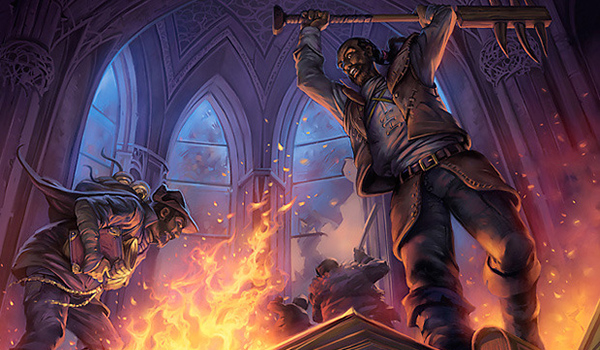
I was very skeptical of these cards in my spoilers article. They just didn't look good enough, especially compared to the Onslaught lands. Having spent the week experimenting, I stand by that skepticism. Not that it will affect things; players want some form of Loam to be a good deck, so they will try to make it work. The problem is that I haven't seen evidence that it will be worthwhile. There is certainly power available, but I believe that Wizards designed these lands with Life from the Loam in mind. Specifically, they were looking at the old Loam decks that frequently dominated Extended. This resulted in the new cycling lands being designed to make Loam interesting, but not actually great. I think this better for Modern overall, if disappointing for enthusiasts—and those who bought Loam at speculation prices.
A History Lesson
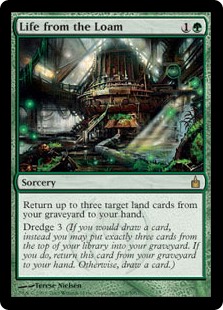 Yes, another one. The only way I can explain my earlier statement, and ultimately why Sheltered Thicket and company aren't good enough, is by examining the history of Life from the Loam. As far as I'm aware, it never made much impact on Standard but proved a force in Extended. Loam decks were the Jund of their day, and more—combined with Forgotten Cave and Tranquil Thicket, these decks generated as much card advantage as pilots had mana, allowing them to crush other fair strategies. And this was a time when the best hoser available was Leyline of the Void!
Yes, another one. The only way I can explain my earlier statement, and ultimately why Sheltered Thicket and company aren't good enough, is by examining the history of Life from the Loam. As far as I'm aware, it never made much impact on Standard but proved a force in Extended. Loam decks were the Jund of their day, and more—combined with Forgotten Cave and Tranquil Thicket, these decks generated as much card advantage as pilots had mana, allowing them to crush other fair strategies. And this was a time when the best hoser available was Leyline of the Void!
The first deck to take advantage of the Loam Engine, as I will call it henceforth, was CAL, popularized by Olivier Ruel. An archetypal cross between prison and fair combo, CAL used Dark Confidant and the Loam Engine to feed Solitary Confinement, which protected you until you found the game-winning Seismic Assault. I remember the deck as being extremely powerful and frustrating to play against, but it was also hard to pilot. CAL rewarded tight play and severely punished misplays. 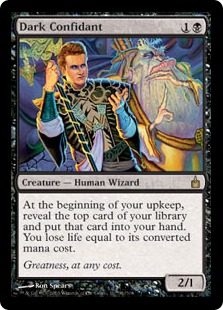 As a result, it was very popular with the pro community, though few others, until decks adapted and invalidated Solitary as a protection spell.
As a result, it was very popular with the pro community, though few others, until decks adapted and invalidated Solitary as a protection spell.
After that, numerous Loam Engine decks continued to thrive, with Aggro Loam being the one most remember. A classic midrange deck, Aggro Loam abused Life from the Loam as not even the combo decks could, thanks to Devastating Dreams. Armageddon plus Wrath of God for two mana is absurd, but the card's irksome symmetry clause had restricted its viability until it was combined with Terravore and Life from the Loam. the Vore was an overwhelming threat post-Dreams and Life ensured that you always had fuel to play and recover from Dreams. There were numerous variations on this strategy, and they were all successful until Onslaught block rotated out of Extended.
Modern Loam
Life from the Loam has never been as good since. It remains a powerful engine card, but nothing matches the old Loam Engine. It's like taking a supercharged V8 engine and removing two cylinders. It may still be a good engine, but it is noticeably worse. Many tried to keep Loam decks going in Extended, and many more have tried in Modern, but they're just not good enough.  No, Dredge doesn't count. It uses Loam, but it doesn't abuse it. Loam's just another dredger there, and not an engine the deck is built around. Raphael Levy has had some success with various Loam strategies, but that's probably because he's Raphael Levy. Dedicated Loam strategies don't make the tier rankings for a reason.
No, Dredge doesn't count. It uses Loam, but it doesn't abuse it. Loam's just another dredger there, and not an engine the deck is built around. Raphael Levy has had some success with various Loam strategies, but that's probably because he's Raphael Levy. Dedicated Loam strategies don't make the tier rankings for a reason.
The work done so far to make Loam Loam again has been the product of nostalgia and hope. Loam is on the edge of greatness, but lacks the consistency to get there. Also, Modern is much faster than Extended. Loam decks always play for longer games, a historically unwise strategic tactic in Modern. With the new cycling lands and Modern slowing down, many now believe that the Loam engine has returned.
Power Tests
I am actually in a quandary about this next section. I tried out a number of decklists, carried out several experiments, and yet I'm having difficulty actually explaining the results. My problem is that there really isn't anything quantifiably wrong with the new engine. It just... feels wrong. 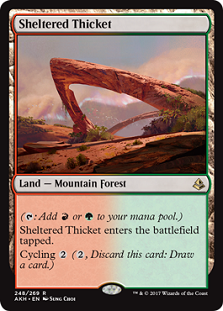 The results of my experiments say that the new cycling lands boosted my test decks over their previous iterations. Not by much, but by enough to notice. The data's clear on the spreadsheet. There is a slight uptick in consistency and win percentage, attributable to cycling finding me business more often than before. The problem is that actually playing the decks tells a different story. While the overall win rate went up by a small amount, I was losing more close games than before, and my long-game win rate was unchanged.
The results of my experiments say that the new cycling lands boosted my test decks over their previous iterations. Not by much, but by enough to notice. The data's clear on the spreadsheet. There is a slight uptick in consistency and win percentage, attributable to cycling finding me business more often than before. The problem is that actually playing the decks tells a different story. While the overall win rate went up by a small amount, I was losing more close games than before, and my long-game win rate was unchanged.
Adding cycling lands, specifically Sheltered Thicket and Canyon Slough, allowed me to cantrip through my deck to smooth out draws and turned into a powerful grind engine alongside Life from the Loam and Darkblast. However the decks felt clunky and poor. I don't know why, but the older lists played better. I don't know if this is a problem inherent in the new engine or just the unrefined decklists, but it felt bad to play the new Loam engine. And then there are the problems with the strategy exogenous to the deck.
Comparing Loams
I think the best example for my problem is a side-by-side comparison. I tested a known Loam deck with and without cycling lands to see how it performed. For this test, I used the following 2016 list from Raphael Levy. Not necessarily because I think it's actually good, but because more recent lists are derivative of his work, as mine was when I actually tried to build my own decks. I also wanted a deck made by a player I recognized, and my (cursory) research didn't turn up anyone else.
Jund Loam, by Raphael Levy (Test deck)
Fitting in the cycling lands was trickier than I expected. It is generally unwise to fiddle with a manabase crafted by a master, especially when you've arbitrarily decided to put in six new cards, but I had to have an experiment. In the end I made the following changes and ran with it:
-1 Blighted Fen
-1 Tectonic Edge
-1 Mutavault
-1 Blood Crypt
-2 Wooded Foothills
+3 Sheltered Thicket
+3 Canyon Slough
I didn't actually test these decks against anything. I just goldfished to learn how the decks operated. One thing I found was that the best use of the cycling lands was to get extra dredges in a turn, and I rarely wanted to just draw cards with these decks. This is a feature of the deck rather than something intrinsic to the Loam strategy, and I imagine that in a grindy midrange shell you would just draw cards with Loam.
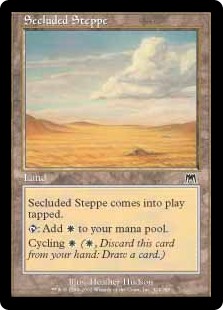 However, I don't think that is necessarily optimal. The problem I had was that playing the Loam engine encouraged me to slow down, and I'm not sure it was correct to do so. Without Thicket and Slough, Jund Loam felt like a grindy aggro deck. With them, I was encouraged to try and play a longer game. And this made the deck clunkier somehow. Maybe it was because I just made the mana worse, but having the cycling lands meant that you could do less in a turn if you were trying to make the engine work. It made little difference if you didn't try to actually use the Loam engine and just played the deck as if it didn't exist. This leads me to believe that the new cycling lands are considerably worse than the old Onslaught cycle.
However, I don't think that is necessarily optimal. The problem I had was that playing the Loam engine encouraged me to slow down, and I'm not sure it was correct to do so. Without Thicket and Slough, Jund Loam felt like a grindy aggro deck. With them, I was encouraged to try and play a longer game. And this made the deck clunkier somehow. Maybe it was because I just made the mana worse, but having the cycling lands meant that you could do less in a turn if you were trying to make the engine work. It made little difference if you didn't try to actually use the Loam engine and just played the deck as if it didn't exist. This leads me to believe that the new cycling lands are considerably worse than the old Onslaught cycle.
Consider this: It is turn four. You have four mana, Life from the Loam in your hand, and three cycling lands in your graveyard. If they're Sheltered Thickets, you can play Loam, then cycle one card. If they're Tranquil Thickets, you can cycle twice. That is either an extra card or an extra dredge. This effect keeps snowballing as the game goes on. The new lands cost too much mana for what they do. Two for a cantrip is an awful lot. Think Twice sees play thanks to flashback, but all the other playable options are creatures. I believe this engine is too inefficient compared to the old one to be viable.
The Big Problem
The deckbuilding and gameplay problems I detailed above are substantial, but they may be something players can overcome. What they cannot fix is Dredge. As I was testing my Loam lists, I kept asking myself why I wasn't just playing Dredge. Loam does many of the same things as Dredge; it even plays most of the same cards. So is it actually better than Dredge? I still don't have a definitive answer, but I doubt it. Ultimately, I think that this question will be the real reason that Loam decks don't remerge. Dredge has a lot of things that make it a more attractive option for graveyard shenanigans.
Why Dredge is better
The short answer is speed, or rather explosiveness. Dredge is capable of generating incredible board presence in the first few turns, which is why you play the deck. Yes, it can grind, but that isn't its Plan A. Playing Prized Amalgam over and over is good, but playing three on turn two is much better. Dredge gets a lot of free wins as a result.
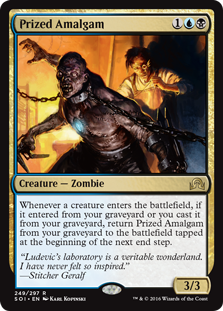 This will never happen in Loam. You will always have to work for your wins. This means that you are giving your opponent the opportunity to play Magic. The more you let your opponent play the game, the more likely it is that you will lose. Loam doesn't let opponents play much Magic, but it lets them play considerably more than Dredge does. When your deck has vulnerabilities, like I detail below, this is a problem.
This will never happen in Loam. You will always have to work for your wins. This means that you are giving your opponent the opportunity to play Magic. The more you let your opponent play the game, the more likely it is that you will lose. Loam doesn't let opponents play much Magic, but it lets them play considerably more than Dredge does. When your deck has vulnerabilities, like I detail below, this is a problem.
There's also the fact that Dredge utilizes its graveyard better than Loam. The cards that you are playing to facilitate the Loam Engine will just be more potent in a dedicated Dredge deck. There are cards in Loam you'd rather not dredge away. That will never be true in Dredge. These decks are very similar, but Dredge is more extreme, giving it the advantage.
Also, I mentioned that using Thicket to get an extra dredge from Loam was good. Consider doing that with Stinkweed Imp in a Dredge deck. More lands in the graveyard may be good, but I can't imagine that's better than having more recursive threats.
Also, Splash Damage
And then there's the impact that Dredge has on the format. Graveyard hate is a way of life now, and that is very bad news for Loam. Dress it up however you want, but Loam is an engine deck, and its engine needs a graveyard to function. Back in Extended, the hate consisted of Tormod's Crypt, Yixlid Jailer, and Leyline of the Void. Crypt could be overcome, Jailer was fairly soft hate, and Leylines are only good when they start the game in play. It's easier for a graveyard engine deck to dodge or overcome these cards. Today, Scavenging Ooze, Relic of Progenitus, and Rest in Peace are everywhere, all of which present more persistent disruption and are far more potent. 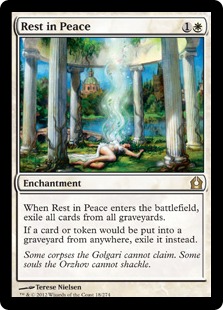 Dredge demands that you play these cards, and all other graveyard decks get caught in the net. Given this fact, I just don't see Loam making a comeback.
Dredge demands that you play these cards, and all other graveyard decks get caught in the net. Given this fact, I just don't see Loam making a comeback.
One of the big problems with Loam is that it depends on its graveyard to be a deck. Go back up to the lists I posted. The decks can't do anything under Rest in Peace. The fair plan is too poor to carry you to victory. Dredge can avoid the problem by being explosive. Other graveyard decks like Abzan Company or Living End can simply be creature decks and plausibly win. Hate hits the current crop of Loam decks too hard for it to be an attractive option.
This Seems Deliberate
I cannot imagine that Wizards did not think about Loam when they designed the—they need a nickname. Bicyclers?—bicyclers. Yes, Mark Rosewater says they don't let the past dictate future design decisions, but the memory of Extended Loam had to surface at some point. As far as I know, the design of the cycling lands has never been discussed publicly by R&D, but I think that the cost was increased compared to Onslaught's because of Loam. They remembered how dominant it used to be and decided that wasn't acceptable. They certainly succeeded if that was a goal.
Don't Lose Hope
While I don't think the cycling lands are the solution to the woes of Loam hopefuls, that does not mean that it cannot work. Shadow of the Grave looks far more promising as a payoff card for Loam decks. Rather than looking for a somewhat clunky value engine, perhaps Loam should return to its roots as a combo/prison deck. I have tested nothing yet, but the potential appears much higher than my previous work. Building around Shadow also allows you to differentiate yourself from Dredge and avoid that problem with Loam. It is worth exploring.





I think the current cycling lands are too expensive to be anything more than an incidental upside. Unless some payoff card comes around, Drake Haven isn’t it, we’ll probably see them mostly in things that have plenty of land already and like to cantrip, like UW or Esper control.
I agree. Additional testing since I wrote the article indicates that any consistency upgrade from the cycling lands is eaten up by inefficiency. It’s just too durdly an engine these days. I’m not even convinced that it would work if they were just the Onslaught lands. A powerful draw engine is nice and all but the payoff is too low. Even in more combo centric decks it’s just not worthwhile. Shadow of the Grave on the other hand…
This is my starting point with Seismic Loam
4 Seismic Assault
4 Life From the Loam
4 Shadow of the Grave
4 Lightning Bolt
2 Molten Vortex
2 Lightning Axe
4 Cathartic Reunion
3 Abrupt Decay
1 Maelstrom Pulse
1 Noxious Revival
3 Liliana of the Veil
4 Blackcleave Cliffs
2 Copperline Gorge
2 Blood Crypt
2 Stomping Grounds
2 Overgrown Tomb
4 Bloodstained Mire
4 Wooded Foothills
2 Forest
3 Swamp
3 Mountain
Draw cards, kill stuff, Pitch 3 lands, Loam, pitch 3 lands, Shadow, pitch 3 lands is 18 damage in 1 turn. Heck of a T4 🙂
I can’t say with confidence that the same testers who missed copycat thought about LFTL. Those bumbling bozos probably forgot it existed. If they did, it would only further indicate how out of touch they are, as these new lands are simply not viable in modern.